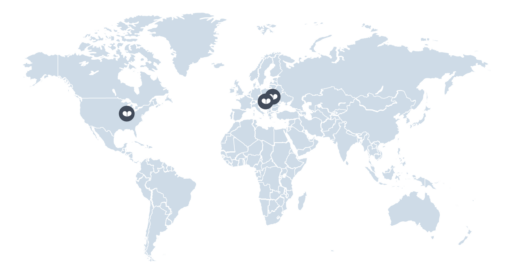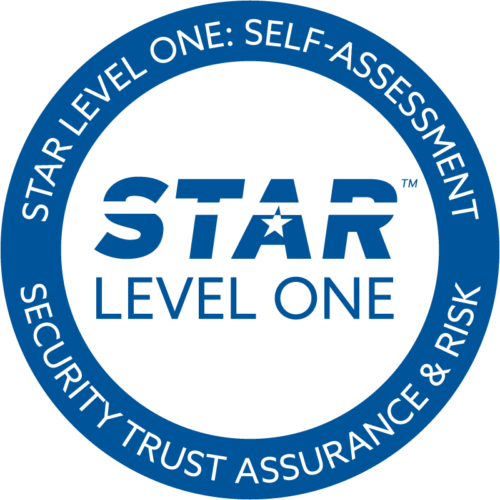
Okay, okay. Not many marketers would have sketched out their new marketing plan on a piece of parchment when the crisis hit. But you need to do far more than store marketing plans on SharePoint to become a trailblazer in digitalization. Real digital transformation means going far beyond simply introducing a couple of new tools. Companies that made use of cross-process marketing technology before the crisis were at a definite advantage when the time came to replan from scratch.
The corona crisis brought all kinds of changes. Including a substantial recession and restrictions in many areas of life. But corona led to more than inconveniences – it also had a few positive effects. Over the last few months, there has been much talk of the crisis speeding up digitalization.
According to an eco survey from April, the crisis not only prompted an increase in social media use and online shopping, but also a greater use of technologies for working from home and digital working. Many companies do indeed seem to have invested in decentralized digital infrastructure.
Unsurprising when you consider that there were times when many industries relied entirely on employees working from home.
During the crisis, digitalization not only enabled a more efficiently designed workflow – for many companies it was the only way to keep their business running.
There was only one problem: Many companies have a rather vague approach to digitalization. It might have been a hot topic long before coronavirus spread, but when we introduce our MRM software to large-scale companies, we often realize that the many digital tools being used are operating as stand-alone solutions, without interacting with one another.
Astonishingly, in 2018, only a fifth of all German companies used fee-based cloud services to give employees access to data and applications. Something they must have regretted at the latest when all employees suddenly had to work from home.
Digitalization means going far beyond simply using software to digitalize manual work steps.
Real digital transformation aims to implement a standardized approach to processes by allocating the most suitable software to each task and, as a next step, connecting the different software solutions to ensure a seamless workflow. It is not possible to work efficiently if there are breaks between systems.
So what does that mean for marketing departments and what does MRM (Marketing Resource Management) have to do with it?
At the beginning of the crisis, marketers were confronted with two challenges that made for a pretty tricky combination:
- Many marketers had to work from home
Aspects that seem banal to highly digitalized, small-scale companies can lead to major delays in large companies still at the beginning of their digitalization journey.
One example is approval. We know from experience that some companies still work with approval folders. Yes, we mean real folders.
Before a new campaign can go online, the folder has to be passed through Marketing and Sales, Supply Chain Management, and Legal so that content can be approved by the different departments.
There’s no need to spell out the impact of a sudden switch to working from home in companies like these.
- Most marketers had to completely replan within a very short period of time.
Marketers in particular had to react quickly to the crisis. Campaigns had to be completely replanned, and not only in terms of content. Schedules and budgets also had to be adapted to the current situation.
This represented a huge challenge for marketing teams who don’t use digital campaign plans and possibly even had to replan everything using spreadsheets. There are two reasons why this is so difficult: First of all, spreadsheets are inflexible, which makes revising plans very difficult – even changing the formatting takes up a huge amount of time. Time that marketers don’t have in a crisis. Secondly, planning campaigns requires the involvement of many different people. Teams that don’t plan or reach decisions on marketing measures using a central platform were already sending countless emails back and forth. When employees were suddenly forced to switch to working from home, coordination then involved a lot more work.
Companies that Use MRM Software Have a Big Advantage – at the Very Latest when Crisis Hits
This is where MRM technology comes into play. Companies using MRM are easily two steps ahead in any crisis. Why?
Let’s return to our approval example: Instead of passing the approval folder from department to department, the company uses an entirely digital approval process. The workflow is clear, and approval and corrections can be requested and authorized with a simple click.
The entire process can take place online and is transparent from beginning to end.
Campaigns and budgets can also be replanned much more simply and quickly with the help of MRM tools. A digital marketing plan not only means the end of annoying formatting of spreadsheets – there are many additional benefits to using modern software for marketing planning:
- First, working from home is never a problem because all employees have access to the data they need.
- Second, teamwork remains efficient because tasks can be distributed using to-dos and it is easy to access a quick overview of who is currently working on what.
- Third, the planning, implementation, and evaluation of campaigns no longer takes place separately but happens on a central platform.
To take a look at a concrete example:
The international investment management company Invesco, which has been using MRM software for several years, had to completely replan their marketing activities due to coronavirus when investor demand underwent a dramatic change.
With the support of MARMIND, planned marketing expenses worth several million euros could be reallocated within only three days.

Paul Carruzzo, head of EMEA marketing performance at Invesco, is certain that it would have taken weeks to repurpose this level of marketing budget if they had used spreadsheets. And the many manual steps could easily have resulted in several incorrect numbers.
With the Right MRM Tool, You Don’t React to a Crisis – You Master It
Some of you may well be thinking, okay, that’s all well and good, but how does an MRM tool help if sales revenues have collapsed in my industry?
MRM software can achieve a great deal, but it can’t prevent entire economies from sliding into a recession.
That’s not what it’s about. It is about providing the tools that help companies maintain an overview of the situation and become more efficient.
If, like Invesco, you don’t need to spend several weeks grappling with spreadsheets but, instead, can repurpose budgets worth millions within the shortest possible period, marketing employees then have far more time.
More time to find out how to respond to changing customer needs. More time to organize new campaigns. Or more time to try out new channels and formats, like some retailers in Germany who made use of Instagram sales and live streaming.
In short: More time to not only react to the crisis, but to master it.














